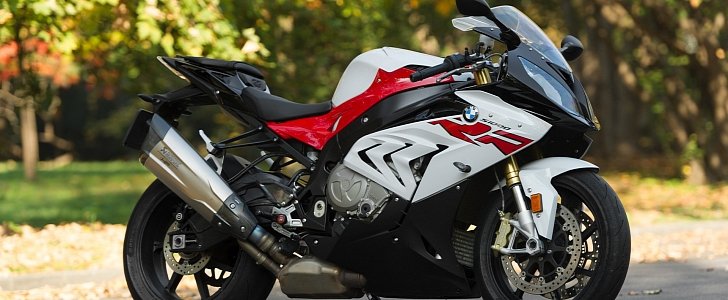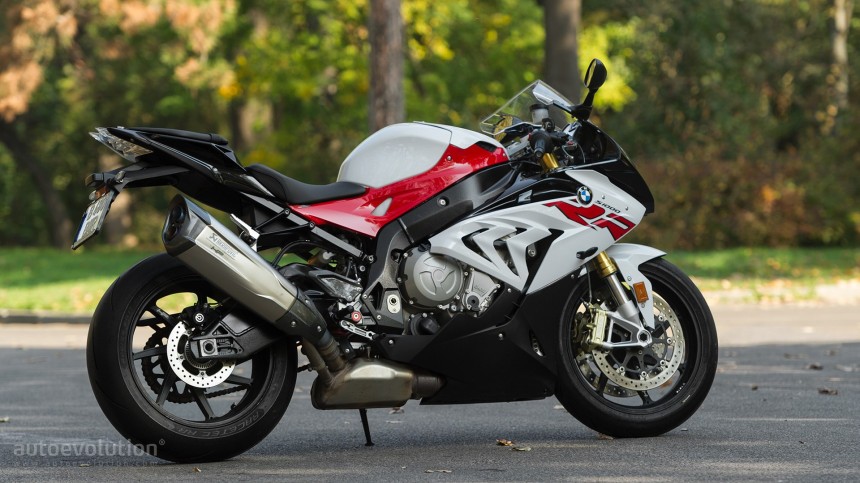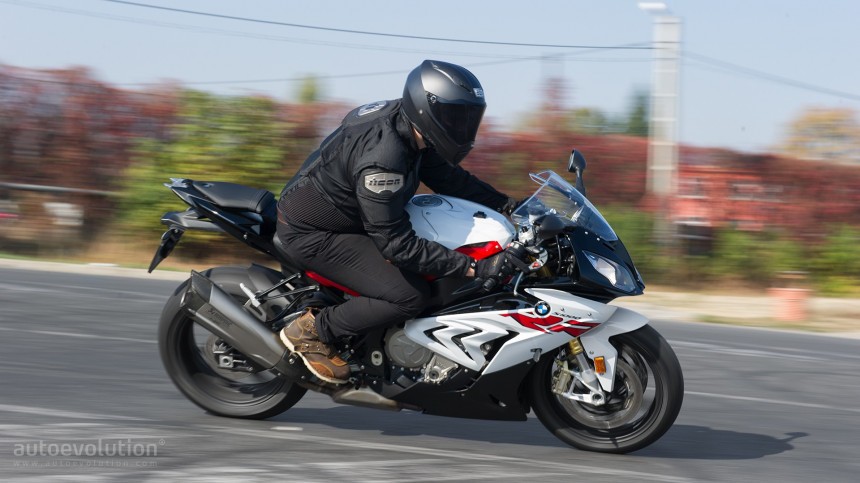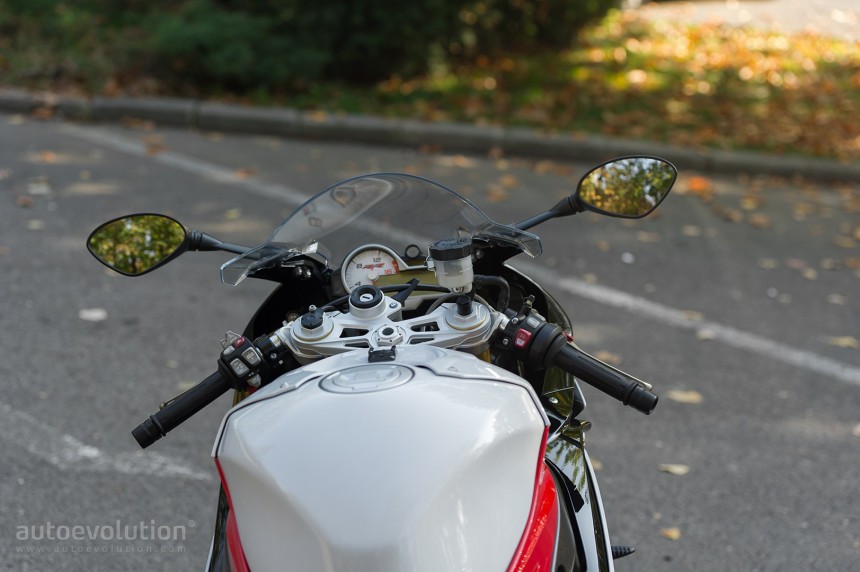I know, you’ve already read all the BMW S 1000 RR reviews out there, and some of you probably know the spec sheet by heart. And why wouldn’t you? After all, this is the bike we should be grateful it came around back in 2009 as it raised the bar in the superbike class and pushed the rest of the manufacturers to come up with even better packages and more performance.
Now, with an all-new S 1000 RR having been leaked this summer, it’s time to take a final look at the latest iteration of the model, which, of course, comes with lots of improvements over the other two versions that were produced over the years.
The S 1000 RR is BMW Motorrad’s first incursion into the modern superbike class, and it made sure it came in with a bang. When it was introduced, the model amazed the bike scene with its 179 horsepower engine, advanced electronics, and the fact that it was easier to live with outside track days.
The model stayed pretty much the same throughout the years, except minor visual cues and the HP4 variant introduced in 2013, which was lighter, came with a new Dynamic Damping Control (DDC) suspension system and a recalibrated ECU for more mid-range power.
Sadly, the HP4 was a limited edition produced only for a year, but fret not as starting with the 2015 S 1000 RR you can have yours with everything the former had to offer, plus some more. The standard model weighs 208 kg (458 lb) with all fluids, comes with a power increase of up to 199 horsepower and 113 Nm (83 lb-ft) at the crank, dual-pipe exhaust to decrease backpressure and increase mid-range power, as well as features like Dynamic Traction Control (DTC), ABS, three riding modes (rain, sport, race), and a multifunctional LCD.
From here, the bike is usually offered with two optional packs available in most markets. The first one, which can be identified as the Dynamic or Race Package adds the Gear Shift Assist Pro for clutchless up and down shifting, DDC which continuously alters the suspension dynamics to match the conditions, and heated grips.
For most people, this would be enough, but the second pack, known as the Performance or Race Pack depending on the market, comes with Ride Modes Pro, cruise control, and ABS Pro. Separately, you can add lightweight forged aluminum wheels and an HP titanium exhaust system specially tuned by Akrapovic, which is also lighter and offers a better soundtrack with pops and blurbs during downshifts.
The 2017 final edition we tested comes with all the above mentioned along with tweaked electronics and exhaust system to meet those pesky Euro4 emissions regulations recently introduced. But don’t worry, the changes haven’t turned the beast into an environment friendly kitten. You literally can’t feel the difference between the 2015 and this one, proving once again the German engineers can do magic when having to provide both fun and discipline.
Looking at the competition, most of the other models on the market caught up with BMW and now offer similar performance and electronics, maybe except heated grips and cruise control which seem a bit of an overkill for the superbike class, but definitely great to have as I’ll explain later.
However, where the S 1000 RR still reigns over other metal beasts of its kin is in daily use comfort and user-friendliness. And lets be honest, most of these bikes will be used for weekend rides on the twisties or for commuting in style, reason why I won’t even bother trying to convince you how great of a track bike the S1KRR is, especially after the 2015 geometry changes it received to make it more flickable and offer better rear traction.
We all know these bikes were made for racing and every owner signs a mental contract with fine-print reading “your crotch will get too hot, you’ll suffer from back aches, leg cramps, and arm pump if you ride this daily”. Every small detail matters here regarding comfort and, luckily, the S 1000 RR has many of such things.
Let's start with the most obvious one - the riding position. I’m 5.9 ft (180 cm) tall and weight almost 220 lb (100 kg), so naturally, I’m not a big fan of sitting into an almost fetal position on a machine with a seat made of softer plastic too much. But the BMW here comes with slightly lower pegs than average, a bit longer, softer seat and not so far-forward handlebars.
This meant that my boots were not stuck to my butt, I was able to slide on the seat forward, get a better grip on the tank, and adopt a more upright posture when riding through the city. Back on the highway or back roads, the butt can slide back a few inches, and you can lay over the tank, tuck behind the windscreen and level your forearms with the grips for better input.
Repeat this procedure every time you feel some discomfort, and you’re good for about 170 miles without having to really stop for stretching. So, yeah, if you really want to, the S 1000 RR can be a decent companion for touring.
You’ll never have to work for power as it pulls like a locomotive in every rev range, and frankly, you don’t even need to hit the 12.500 rpm magic number to feel the kick. The braking system, which is a combined one, by the way, offers enough confidence to allow for trail braking if you enter a corner too hot and lacks that aggressive initial bite spupersports usually have.
The electronically-managed suspension is definitely an option you should fork out the cash for even if you don’t plan on hitting the track too often. It simply does wonders on a more bumpy road than a standard setup. You’ll still get shaken up due to the bikes nature, but all those spikes generated by irregularities will be toned down, and you won’t feel those sharp, sudden impacts transmitted to your hands and legs.
I have only touched the cruise control once while being on the highway because I am a control freak and don’t like machines doing vital stuff for me, so I can’t consider this feature too important for this kind of motorcycle. The heated grips on the other hand (pun intended) were my best ally while riding early in the autumn mornings or at night. This is also a time when the frame, which gets quite hot, becomes something very convenient.
The passenger seat is flat, offering a stable base for a tail bag, and the rear end comes with sufficient anchoring points for luggage. The engineers even incorporated two retractible textile latches under the rear seat for such purpose, so, if you’re using a Kriega bag or a similar setup, you only have to use one of their underseat belts as the other anchor points are already provided by BMW.
Speaking of the pillion seat, this also shields enough “luggage space” for your keys, smartphone, or wallet if you don’t want them hanging inside your pockets. The cubbyhole doesn’t get too hot for your electronics, and the only thing it’s missing is a USB outlet to charge stuff while on the go. In my opinion, every vehicle should have this thing as standard nowadays, no matter if its a scooter or a superbike; smartphones battery life matter!
Fuel consumption is another chapter that puts the spotlight on this model. The fuel tank holds a total of 17.5 liters (4.6 gal) and BMW Motorrad states the bike does an average of 6.7 l/100 km (35 mpg). Which is amazingly true as I burned 17 liters (4.5 gal) of fuel in about 250 km (155 miles) of mixed conditions (city, highway, backroads), translating to an average fuel consumption of... *drumroll*... 6.8 l/100 km (34 mpg).
In the end, all I want to say is that everything you heard about this bike is true in terms of user-friendliness. In my opinion, the 2017 BMW S 1000 RR is the best compromise you can make now if you only have money/space for one motorcycle in your life. You get top class power (not including newer supercharged beasts), excellent electronics, and enough creature comforts to use it daily without complaining much.
It’s not as expensive and exquisite as an Italian superbike, but the S 1000 RR definitely gets noticed easily and offers the best bang for the buck. Take it while you can; the new generation feels like it’s just around the corner and, by the looks of it, it might be a very different animal.
The S 1000 RR is BMW Motorrad’s first incursion into the modern superbike class, and it made sure it came in with a bang. When it was introduced, the model amazed the bike scene with its 179 horsepower engine, advanced electronics, and the fact that it was easier to live with outside track days.
The model stayed pretty much the same throughout the years, except minor visual cues and the HP4 variant introduced in 2013, which was lighter, came with a new Dynamic Damping Control (DDC) suspension system and a recalibrated ECU for more mid-range power.
Sadly, the HP4 was a limited edition produced only for a year, but fret not as starting with the 2015 S 1000 RR you can have yours with everything the former had to offer, plus some more. The standard model weighs 208 kg (458 lb) with all fluids, comes with a power increase of up to 199 horsepower and 113 Nm (83 lb-ft) at the crank, dual-pipe exhaust to decrease backpressure and increase mid-range power, as well as features like Dynamic Traction Control (DTC), ABS, three riding modes (rain, sport, race), and a multifunctional LCD.
For most people, this would be enough, but the second pack, known as the Performance or Race Pack depending on the market, comes with Ride Modes Pro, cruise control, and ABS Pro. Separately, you can add lightweight forged aluminum wheels and an HP titanium exhaust system specially tuned by Akrapovic, which is also lighter and offers a better soundtrack with pops and blurbs during downshifts.
The 2017 final edition we tested comes with all the above mentioned along with tweaked electronics and exhaust system to meet those pesky Euro4 emissions regulations recently introduced. But don’t worry, the changes haven’t turned the beast into an environment friendly kitten. You literally can’t feel the difference between the 2015 and this one, proving once again the German engineers can do magic when having to provide both fun and discipline.
Looking at the competition, most of the other models on the market caught up with BMW and now offer similar performance and electronics, maybe except heated grips and cruise control which seem a bit of an overkill for the superbike class, but definitely great to have as I’ll explain later.
However, where the S 1000 RR still reigns over other metal beasts of its kin is in daily use comfort and user-friendliness. And lets be honest, most of these bikes will be used for weekend rides on the twisties or for commuting in style, reason why I won’t even bother trying to convince you how great of a track bike the S1KRR is, especially after the 2015 geometry changes it received to make it more flickable and offer better rear traction.
We all know these bikes were made for racing and every owner signs a mental contract with fine-print reading “your crotch will get too hot, you’ll suffer from back aches, leg cramps, and arm pump if you ride this daily”. Every small detail matters here regarding comfort and, luckily, the S 1000 RR has many of such things.
This meant that my boots were not stuck to my butt, I was able to slide on the seat forward, get a better grip on the tank, and adopt a more upright posture when riding through the city. Back on the highway or back roads, the butt can slide back a few inches, and you can lay over the tank, tuck behind the windscreen and level your forearms with the grips for better input.
Repeat this procedure every time you feel some discomfort, and you’re good for about 170 miles without having to really stop for stretching. So, yeah, if you really want to, the S 1000 RR can be a decent companion for touring.
You’ll never have to work for power as it pulls like a locomotive in every rev range, and frankly, you don’t even need to hit the 12.500 rpm magic number to feel the kick. The braking system, which is a combined one, by the way, offers enough confidence to allow for trail braking if you enter a corner too hot and lacks that aggressive initial bite spupersports usually have.
The electronically-managed suspension is definitely an option you should fork out the cash for even if you don’t plan on hitting the track too often. It simply does wonders on a more bumpy road than a standard setup. You’ll still get shaken up due to the bikes nature, but all those spikes generated by irregularities will be toned down, and you won’t feel those sharp, sudden impacts transmitted to your hands and legs.
I have only touched the cruise control once while being on the highway because I am a control freak and don’t like machines doing vital stuff for me, so I can’t consider this feature too important for this kind of motorcycle. The heated grips on the other hand (pun intended) were my best ally while riding early in the autumn mornings or at night. This is also a time when the frame, which gets quite hot, becomes something very convenient.
Speaking of the pillion seat, this also shields enough “luggage space” for your keys, smartphone, or wallet if you don’t want them hanging inside your pockets. The cubbyhole doesn’t get too hot for your electronics, and the only thing it’s missing is a USB outlet to charge stuff while on the go. In my opinion, every vehicle should have this thing as standard nowadays, no matter if its a scooter or a superbike; smartphones battery life matter!
Fuel consumption is another chapter that puts the spotlight on this model. The fuel tank holds a total of 17.5 liters (4.6 gal) and BMW Motorrad states the bike does an average of 6.7 l/100 km (35 mpg). Which is amazingly true as I burned 17 liters (4.5 gal) of fuel in about 250 km (155 miles) of mixed conditions (city, highway, backroads), translating to an average fuel consumption of... *drumroll*... 6.8 l/100 km (34 mpg).
In the end, all I want to say is that everything you heard about this bike is true in terms of user-friendliness. In my opinion, the 2017 BMW S 1000 RR is the best compromise you can make now if you only have money/space for one motorcycle in your life. You get top class power (not including newer supercharged beasts), excellent electronics, and enough creature comforts to use it daily without complaining much.
It’s not as expensive and exquisite as an Italian superbike, but the S 1000 RR definitely gets noticed easily and offers the best bang for the buck. Take it while you can; the new generation feels like it’s just around the corner and, by the looks of it, it might be a very different animal.
















































